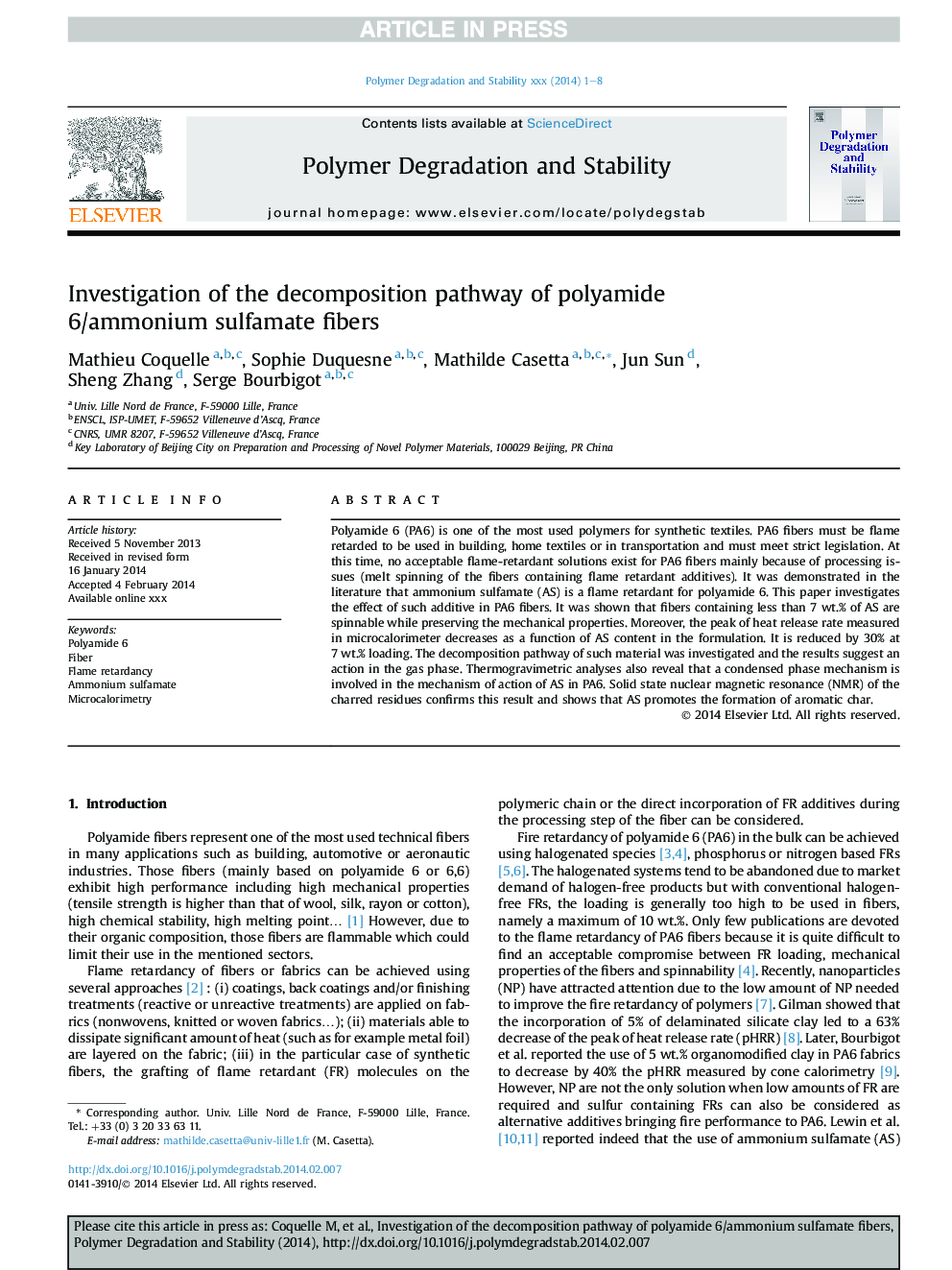| Article ID | Journal | Published Year | Pages | File Type |
|---|---|---|---|---|
| 5201868 | Polymer Degradation and Stability | 2014 | 8 Pages |
Abstract
Polyamide 6 (PA6) is one of the most used polymers for synthetic textiles. PA6 fibers must be flame retarded to be used in building, home textiles or in transportation and must meet strict legislation. At this time, no acceptable flame-retardant solutions exist for PA6 fibers mainly because of processing issues (melt spinning of the fibers containing flame retardant additives). It was demonstrated in the literature that ammonium sulfamate (AS) is a flame retardant for polyamide 6. This paper investigates the effect of such additive in PA6 fibers. It was shown that fibers containing less than 7Â wt.% of AS are spinnable while preserving the mechanical properties. Moreover, the peak of heat release rate measured in microcalorimeter decreases as a function of AS content in the formulation. It is reduced by 30% at 7Â wt.% loading. The decomposition pathway of such material was investigated and the results suggest an action in the gas phase. Thermogravimetric analyses also reveal that a condensed phase mechanism is involved in the mechanism of action of AS in PA6. Solid state nuclear magnetic resonance (NMR) of the charred residues confirms this result and shows that AS promotes the formation of aromatic char.
Related Topics
Physical Sciences and Engineering
Chemistry
Organic Chemistry
Authors
Mathieu Coquelle, Sophie Duquesne, Mathilde Casetta, Jun Sun, Sheng Zhang, Serge Bourbigot,
